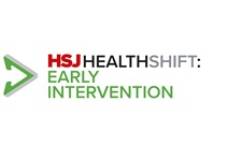Lord Darzi’s recent report highlighted a myriad of problems for the NHS but also plenty of solutions, one of them being a “tilt towards technology”. An HSJ webinar, in association with Juniper Networks, discussed whether better technology held the key to fixing the health service’s woes.
In association with
Lord Darzi’s September 2024 report into the state of the NHS bemoaned the fact that the health service was in the “foothills of digital transformation”, especially when compared to other parts of the UK economy.
He proposed, among other things, a “tilt towards technology” — the argument being that better technology could enable the NHS to achieve some of its allied aims of delivering care closer to home, retaining and attracting staff, and improving productivity.
In December, an HSJ webinar, in association with Juniper Networks, discussed how this “tilt” might look, both for the service and for patients.
“Technology for the sake of technology doesn’t necessarily give you an impact that you seek,” said Pritesh Mistry, a policy fellow with a focus on digital technologies at the King’s Fund. The important thing, he believes, is “making it meaningful”, which may require cultural shifts. While physical care is currently considered the “gold standard,” this can hold back thinking about how digital modes of care could offer something new.
Ben Shemesh was able to provide a fresh perspective on the NHS’s digital maturity. He recently joined the Health Foundation from the Department of Health in Victoria, Australia.
In broad terms, he thinks Australia has better data sharing across states, territories, and the federal level, as well as a clear, 10-year digital strategy running until 2033.
In the UK, he sees “a lot of variation in terms of tech and digital maturity across regions,” and a lack of standardisation (not to mention adoption) in electronic patient records.
Andrew Chronias is Central London Community Healthcare Trust’s chief information officer. His focus is, therefore, on how technology can help “wrap care around the patient as a holistic service with a view to maintaining their independence and maintaining them in their home”.
He identified several examples where digital approaches can make a big difference. First, a single electronic patient record (his geographical patch is covered by the London Care Record) is vital to enabling clinicians to act as a single, coordinated team, irrespective of the organisation and sector.
Second, he highlighted how technology can help with “delivering care differently”. Mr Chronias gave the example of remote monitoring to assure patients that they are under the care of professionals, even though they may be at home.
Next, he pointed to tools that empower patients to manage their own conditions, such as diabetes or physiotherapy apps.
Finally, there are the transactional aspects of care that are so important to the patient experience. This includes digital appointment notifications and tools that help staff when on the move, such as cloud-based and mobile-optimised applications and route-planning software.
What role, then, might technology providers play in a more digitally-enabled NHS? Naomi Elia, UKI head of public sector at Juniper Networks, believes they can serve as a bridge, connecting central policy with the specific needs of healthcare organisations while leveraging emerging technology to address both effectively.
“For me, it’s really important to educate organisations on what’s actually on the market,” said Ms Elia, noting advances in technology may leave healthcare providers behind.
She advises customers to explore what technology is available and try things out without a long-term commitment. They can then roll out solutions once they are fully confident.
Ms Elia explained that healthcare organisations often see initiatives, such as bed capacity monitoring, as an exercise in buying technology. Instead, she emphasised the importance of critically evaluating how technology is being used and how new types of connectivity or data solutions can drive the desired changes for healthcare providers.
Audience members were invited to submit questions to the panel, and one viewer asked Mr Chronias for his thoughts about potential barriers to using tech in the home, by older patients, for example.
He said his organisation always provides traditional alternatives but also offers support for patients who are interested in using newer technology but may need help to do so.
“I think this is an area where we really need to partner much more with our voluntary sector colleagues,” he said.
Mr Mistry cautioned against making assumptions about patients’ abilities, adding: “I think we need to shift perspectives to thinking about what the person would like and how they would like to interact with services.”
Another viewer asked where technology holds the most promise to improve the patient experience.
Currently, said Mr Shemesh, “the market kind of drives the solutions that are available”. He would like to see more of a “challenge focus,” where excluded groups are brought into the decision-making process along with clinicians to build solutions that address their needs.
Ms Elia shared an example of her colleagues’ work in the US, where they developed a digital experience that eases entry into hospitals for patients and clinical teams. She said patients now know exactly where to go and how long their appointment will take.
“The fear and the upset of going into hospital is kind of eradicated, so you’re already in a much calmer phase by the time you get there,” said Ms Elia. “You’re condensing the time that it actually takes to get to an appointment, to conduct your appointment, and then filter the next person in.”
The idea of “horizon scanning” came up multiple times during the discussion, with participants agreeing healthcare providers need time and space to explore what new technologies can offer and how they can be adopted.
“It might seem like you can just deploy a technology,” said Mr Mistry. “But it’s about where it’s going to sit, how you want to move people to that way of working, how you’re going to support them to change and work with each other.”
An on-demand version of this webinar is available.
If you have already registered as a viewer, visit this web page to access the recording.
If you have not previously registered, complete the registration form here, and you will then be sent details of how to access the recording.


























